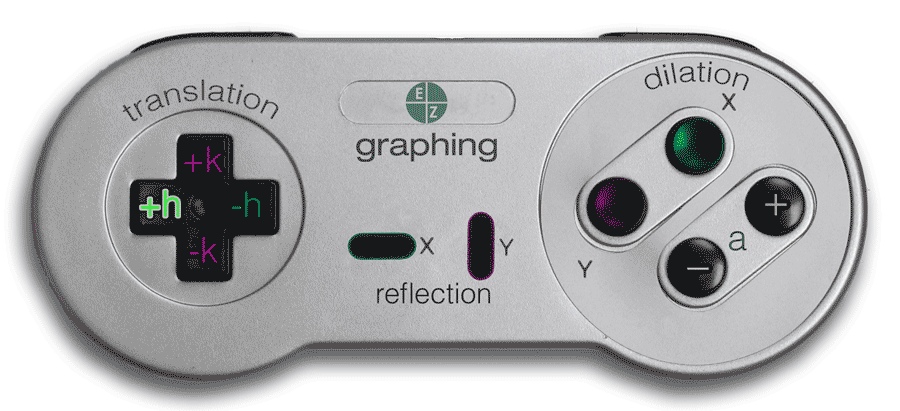
Question: is moving to the left positive or negative?
y = f(x+h)+k
Parent functions can translate left or right and/or up or down. To help illustrate this, think of a game controller like the one shown above. The green flashing terms are ‘+h‘ and ‘–h‘ on the x-axis (the left and right) and the purple flashing terms are ‘+k‘ and ‘–k‘ on the y-axis (the up and down). Let’s take a deeper look at translations:
HORIZONTAL X TRANSLATION
Moving left on the game controller changes the function to:
y = f(x+h)
Example: y = |x+4| moves left 4 units from the origin
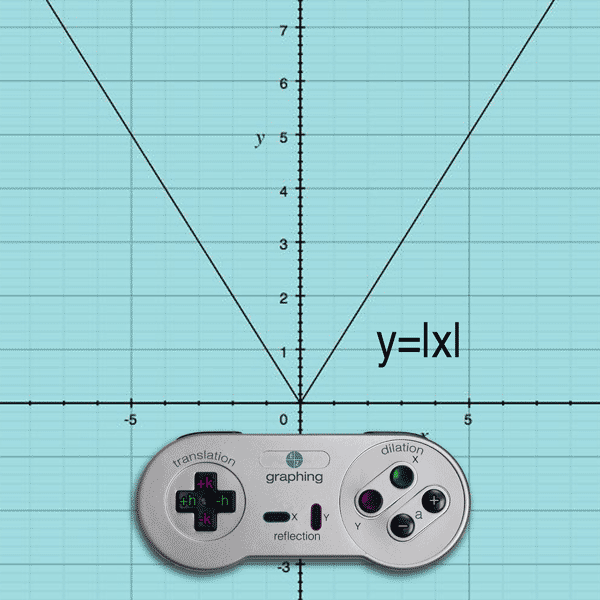
Moving right on the game controller changes the function to:
y = f(x-h)
Example: y = |x-4| moves right 4 units from the origin
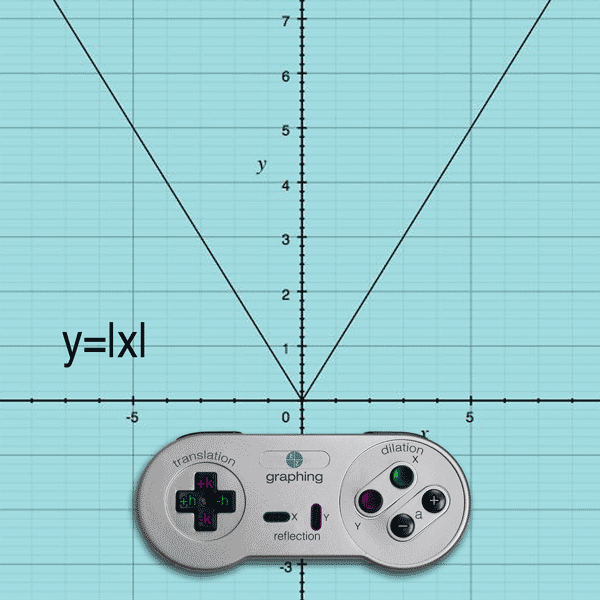
VERTICAL Y TRANSLATION
Moving up on the game controller changes the function to:
y = f(x)+k
Example: y = |x|+4 moves up 4 units from the origin
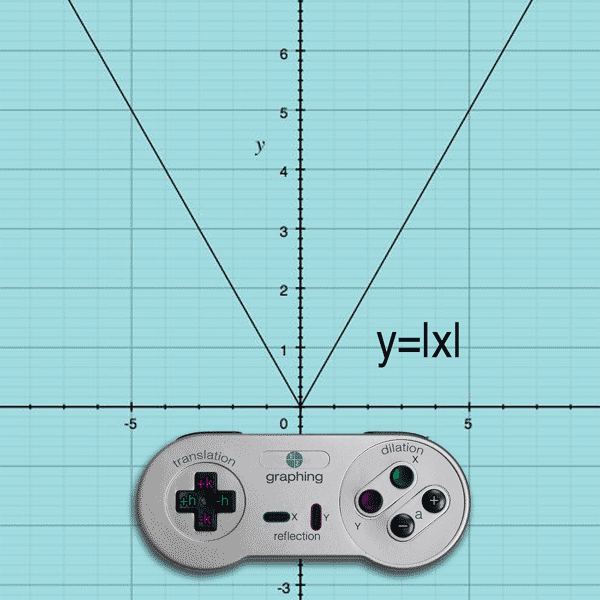
Moving down on the game controller changes the function to:
y = f(x)-k
Example: y = |x|-4 moves down 4 units from the origin
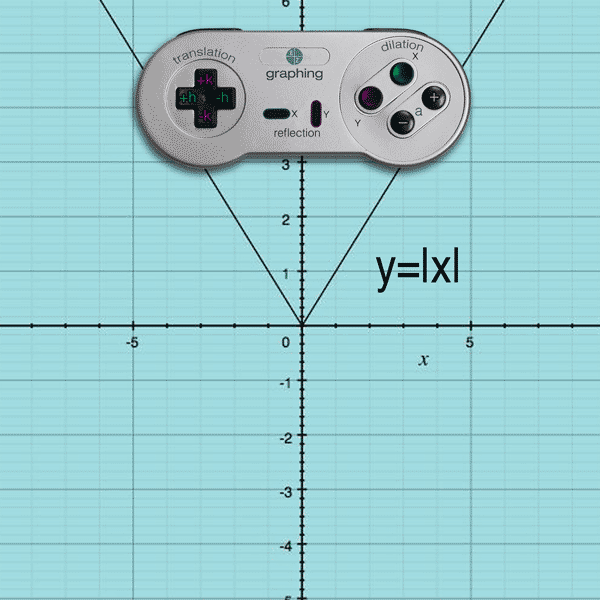
X-Axis Translation (left and right)
Notice the difference of the ‘h‘ value. When you move left, the ‘h’ is positive and when you move right, the ‘h’ is negative. It’s unintuitive to think that moving to the left is positive and moving to the right is negative; however, if you remember that ‘X-axis’ related “things” are translated oppositely of how you see it, you’ll be great at graphing. Curious why this is?… just ask your math teacher and it should be cleared up within seconds. If you are still confused, shoot us an email.
Y-Axis Translation (up and down)
Notice the difference of the ‘k‘ value. When you move up, the ‘k’ is positive and when you move down, the ‘k’ is negative. It should make perfect sense that moving up is positive and moving down is negative; so remember that ‘Y-axis’ related “things” translate exactly as they appear and you’ll be an amazing grapher.
